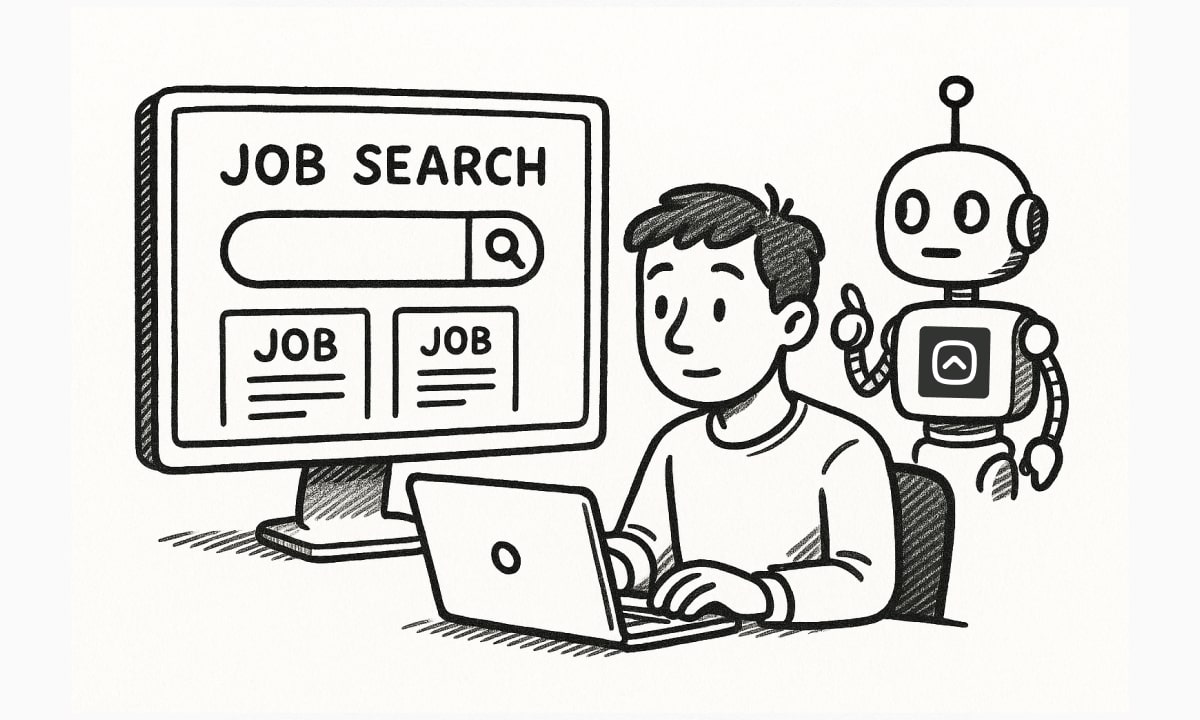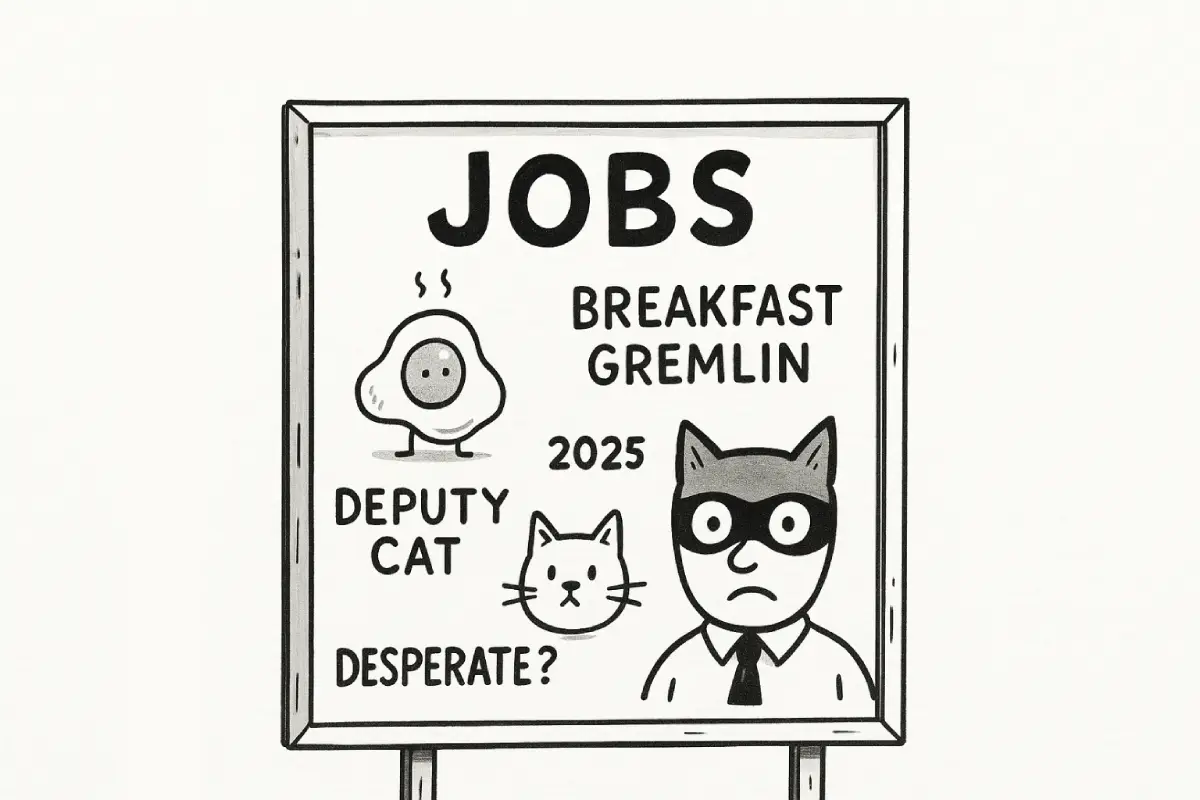In this article, you’ll learn how LinkedIn job automation works, what tools and strategies are out there, and how to use them without hurting your chances.
We’ll look at the differences between browser scripts, auto-apply bots, and smarter AI job agents – and show you how to prepare your profile, choose the right method, and start applying more effectively.
Whether you’re actively job hunting or just exploring what’s possible, this guide will help you understand how to approach automation the right way.
Understanding LinkedIn Job Automation: Methods and Principles
Before choosing a tool, it’s useful to understand what LinkedIn job automation actually means – and how different approaches work. At its core, LinkedIn automation refers to using software or scripts to streamline parts of the job application process – from searching for jobs to filling out application forms automatically.
But not all automation is created equal. Let’s look at the three main approaches:
| Custom Scripts (DIY) Some developers write their own automation scripts using Python, Selenium, or Puppeteer. These bots can:
Downsides:
| Browser Extensions and Basic Auto-Clickers These are low-code tools like LazyApply that offer a user-friendly UI and mass-click Easy Apply. They simulate user actions to apply to dozens (or hundreds) of jobs in one go. Problems:
| AI Job Agents – Modern Approach This new generation of tools – like LiftmyCV – combines:
Instead of flooding LinkedIn, they target and personalize each submission, working with the platform – not against it. Automation isn’t about doing more. It’s about doing better – at scale. |
Why LinkedIn Job Search is Broken
Let’s face it – applying to jobs on LinkedIn has become a mess.
The Easy Apply feature was supposed to save time. Now? It’s overloaded. Every job post receives hundreds of applications within hours – most of them generic, rushed, and barely targeted.
Recruiters have adapted. Many now ignore Easy Apply submissions altogether, or rely heavily on filters and applicant tracking systems (ATS) to screen candidates. Your resume might never even be seen, no matter how qualified you are.
Meanwhile, job seekers spend 10–20 hours a week manually submitting applications – clicking, uploading, tracking in spreadsheets – with little to show for it.
The result? Burnout. Frustration. Silence.
Easy Apply ≠ Easy Results
LinkedIn remains the most important job platform in the world – especially for professionals in tech, marketing, design, operations, and remote-first companies.
Today, simply clicking “Apply” isn’t enough.
Hiring managers expect tailored resumes. Some reject applications without personalized cover letters. And many rely on AI screeners that look for specific keywords before a human ever opens your file.
This is why traditional job hunting – even on a modern platform like LinkedIn – is falling apart.
The Case for Automation (But Done Right)
It’s tempting to fix the problem with brute force: apply to hundreds of jobs automatically, using browser scripts or mass-submission tools like LazyApply.
But that creates a new problem: spam. You might get flagged. Or worse – ignored by default. Volume doesn’t get you hired. Relevance does.
That’s where a new class of tools comes in – AI job agents that don’t just auto-click, but actually think: They match jobs to your skills. Personalize resumes and cover letters. Apply on your behalf – but with intent.
This isn’t job hunting. It’s job targeting – at scale.
But before you start automating, there’s something even more important: Your LinkedIn profile needs to be ready.
How to Prepare Your LinkedIn Profile Before Automating
Before you start auto-applying to LinkedIn jobs with any AI tool, one thing must be in order:
your LinkedIn profile.
Why? Because even if your resume and cover letter are great, most recruiters will still click through to your profile. And if they see an empty, outdated, or unprofessional presence – they’ll move on.
Think of your LinkedIn profile as your personal landing page. It must be sharp, keyword-optimized, and recruiter-ready.
Step 1: Clean, Consistent Visuals
- Profile photo: Use a high-resolution, professional headshot with good lighting. Avoid selfies or group photos.
- Banner image: Replace the default background with something relevant – your field, a clean abstract, or your name and title.
- Name + Headline: Your headline shouldn’t just be your job title. Instead, include your role + value prop.
- Examples:
- Product Manager | Building growth engines for SaaS companies
- Software Developer | MERN Stack | Passionate Teacher
Step 2: Optimize Your “About” Section
This is where most users either say too little – or way too much.
Use this section to highlight:
- What you do best
- Key achievements or career focus
- Tools, industries, or methodologies you know
- What kinds of roles you’re looking for
Keep it skimmable. Use short paragraphs or bullets. Include keywords – because LinkedIn’s algorithm indexes this section heavily.
Step 3: Add Relevant Experience & Keywords
Your Experience section should align with the jobs you’re targeting.
That means:
- Focus on outcomes, not tasks
- Add metrics and impact whenever possible
- Mention tools and skills found in the job listings you’re applying for
Example:
Instead of “Worked on marketing campaigns” → write “Launched 7+ performance marketing campaigns across Google Ads & Meta, driving 40% YoY growth.”
Step 4: Turn on “Open to Work” (But Smartly)
Use LinkedIn’s Open to Work setting to signal availability – but make it visible only to recruiters, not your full network (especially if you’re job hunting quietly).
Also, define:
- Job titles you’re open to
- Location preferences (or remote)
- Employment types (full-time, contract, freelance)
Step 5: Final Polish Before Automation
- Remove typos
- Align your resume and profile (don’t show conflicting job titles or timelines)
- Make sure your profile URL is clean (e.g., linkedin.com/in/yourname)
- Add 3–5 skills most relevant to your desired role
- Optional but helpful: Add a custom “Featured” section with your portfolio, CV, or relevant links
AI Job Agents for LinkedIn: Smart vs Lazy Automation
Once your LinkedIn profile is optimized, the next step is to scale your job search. That’s where AI job agents come in.
But not all automation is created equal. Some tools just spam jobs on your behalf. Others actually help you land them. Understanding the difference is critical – especially on LinkedIn, where quality matters more than quantity.
What Smart AI Job Agents Do
The best AI tools don’t just click buttons – they read, analyze, and adapt. A smart AI job agent for LinkedIn should:
- Match jobs to your profile based on title, skills, and experience
- Analyze job descriptions to extract keywords and context
- Tailor your resume and generate a custom cover letter per listing
- Auto-fill application forms with accurate, human-like answers
- Log every application with full tracking
It’s like having a digital assistant that actually understands hiring – and knows how to make you look good.
What Lazy Automation Gets Wrong
On the other end of the spectrum are tools that treat job applications like email blasts.
For example, tools like LazyApply are built around brute force: “Apply to 750 jobs a day” with minimal input, no filters, and the same resume every time.
That might sound efficient, but it’s ineffective at best – and harmful at worst. Why?
- You apply to jobs you’re not qualified for
- Recruiters recognize templated responses instantly
- LinkedIn algorithms may detect automated behavior
- You risk damaging your credibility – or even getting shadowbanned
Lazy automation might save time, but it kills your chances.
LinkedIn Isn’t Just a Job Board
It’s a professional network. Every interaction you have – including how you apply – leaves a trace. Recruiters do click your profile. They read your message. They judge whether your resume shows real intent.
That’s why automation must be handled carefully. Smart AI tools enhance your presence. Lazy ones undermine it.
Why LazyApply Doesn’t Work and Might Harm Your LinkedIn Presence
LazyApply is one of the most widely known job automation tools – and one of the most misunderstood. Its pitch sounds appealing: “Apply to hundreds of jobs per day with one click.”
But when it comes to LinkedIn, this kind of automation is not just ineffective – it’s dangerous.
Blind Automation = Bad Reputation
LazyApply’s core method is simple: Install a Chrome extension → select platforms → mass apply to job listings using the same resume and answers. No personalization. No filters. No accountability. It treats LinkedIn Jobs as a numbers game. But recruiters don’t.
LinkedIn’s algorithms are built to promote meaningful engagement – not spamming. When your profile repeatedly shows up in irrelevant applications, you get flagged as low-quality, even if your resume is solid.
Some users have reported:
- Account restrictions or CAPTCHA walls
- Ignored applications due to low-match scores
- Zero interviews, despite applying to hundreds of jobs
One Reddit user put it plainly:
“LazyApply applied me to 300+ LinkedIn jobs – not a single reply. Turns out half were expired or a bad fit.”
What Real Users Say
LazyApply has a 2.1-star rating on Trustpilot, with complaints ranging from:
- Submitting to outdated or fake listings
- No clear tracking of what was sent and where
- Refusal to issue refunds even when results were nonexistent
- Poor customer support
Some users even allege that the company tried to hide negative reviews by renaming their profile under a shell brand. That’s not the behavior of a transparent, trustworthy platform.
AI-Powered”? Not Really.
LazyApply claims to use something called “Job GPT” to answer application questions. But there’s no clarity on:
- What AI model is used
- How personalization works (if at all)
- Whether job descriptions are even analyzed
In most cases, it simply copy-pastes the same data over and over – making it easy for recruiters (and LinkedIn) to spot.
In the next section, we’ll look at how LiftmyCV takes a completely different approach – helping you apply faster and smarter on LinkedIn, without sacrificing quality or reputation.
How LiftmyCV Lets You Auto-Apply to LinkedIn Jobs – the Smart Way
Unlike tools that treat job applications like a lottery, LiftmyCV is designed to help you win the job – not just send the resume. It’s a fully AI-powered job application agent built specifically for platforms like LinkedIn, where recruiters expect quality, personalization, and relevance.
Here’s how LiftmyCV avoids the pitfalls of mass automation – and actually helps you get results.
Targeted Job Matching on LinkedIn
Instead of spraying your resume everywhere, LiftmyCV lets you:
- Apply only to relevant LinkedIn Jobs based on title, location, and keywords
- Filter by job type (full-time, remote, contract, etc.)
- Exclude low-quality or expired listings
That means no more wasting time – or damaging your reputation – with irrelevant applications. The system scans job listings in real time, so you’re always applying to the freshest opportunities that match your profile.
ATS-Friendly Profiles & AI Cover Letter Personalization
This is where LiftmyCV stands out. Before each application, it:
- Reads the job description on LinkedIn
- Analyzes what skills and experience are required
- Autofills LinkedIn Job applications (ChatGPT-powered)
- Generates a unique, AI-written cover letter per job
All of this happens in seconds – with zero manual editing from your side.
Works Seamlessly on LinkedIn (and Beyond)
LiftmyCV is built to work directly inside your browser via a Chrome extension. It integrates natively with:
- LinkedIn Jobs
- Monster
- Lever
- Ashby
- Workable
- Recruitee
- Breezy and other ATS platforms
You don’t need to switch between tabs or copy data manually – the AI autofills forms with context-aware answers based on your resume and job details.
Application Tracking & Optimization
Cannot remember where you applied or what version of your job application you used? LiftmyCV includes a tracking dashboard with:
- Job title, company, and platform
- Resume/cover letter version used
- Application status and timestamp
- Filtering and history search
This lets you measure what’s working and continuously improve your chances.
Real Results, Not Promises
Users of LiftmyCV consistently report:
- Higher reply rates on LinkedIn
- More interviews, faster
- Less time wasted on manual work
- More confidence applying to better-matched jobs
Because automation only works when it’s paired with intent and precision – and that’s what LiftmyCV was built for. In the final section, we’ll show you how to try LiftmyCV for free, start applying to LinkedIn jobs smarter – and never go back to doing it manually.
Try LiftmyCV for Free – No Credit Card Needed
You can get started in minutes:
- Create your profile on LiftmyCV
- Upload your resume
- Install the Chrome extension
- Set your job filters
- Launch your first auto-apply campaign for LinkedIn Jobs
You’ll get:
- 3 free auto-applications to test the platform before upgrading
- AI-personalized cover letters
- Smart, ChatGPT-powered autofill on LinkedIn and ATS platforms
- Full access to application tracking and profile editing tools
Ready to get started? Automate your LinkedIn job search with LiftmyCV today!
Final Advice for Job Seekers
- Optimize your LinkedIn profile first – it’s your reputation
- Automate wisely – don’t use blunt-force tools that treat your career like a numbers game
- Focus on quality over quantity – especially on platforms like LinkedIn, where reputation matters
- Use AI to enhance, not replace, your intent
- In a world where everyone is clicking blindly, the one who applies thoughtfully – and at scale – wins.










